‘A Museum Shaped by People’
The current-day Hachinohe Art Museum opened in 2021 after complete renovation works were completed on the building.
The concept behind the new museum is ‘an art farm for new encounters and learning.’ By fostering connections through art, we nurture individuals, and those individuals help shape the community. The museum focuses not only on the artworks as objects themselves, but also on the events and activities driven by people and projects and thus embarked on a new journey with a vision of cultivating the city for the future.
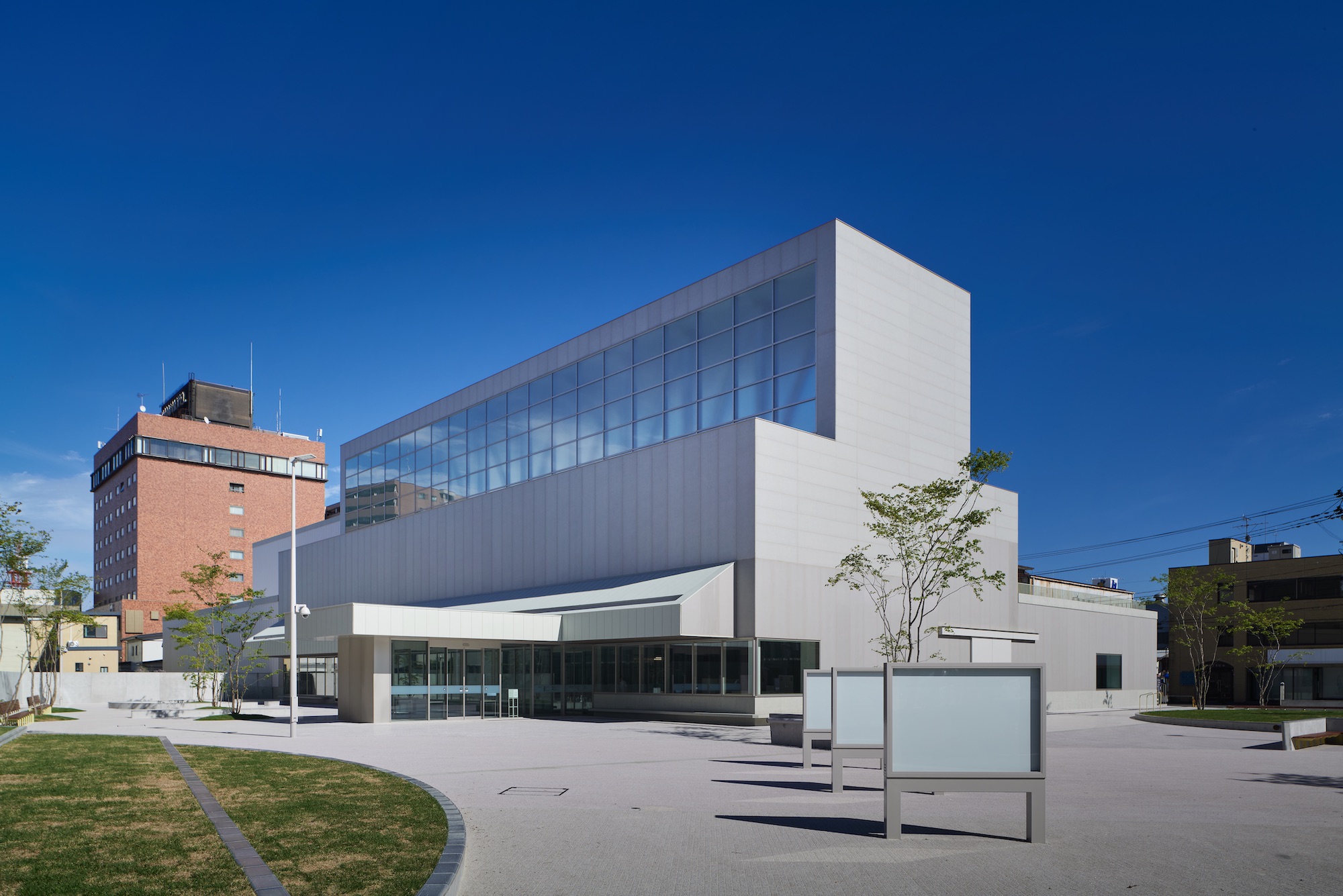
The complete renovation not only enhanced facilities like the exhibition rooms and museum storage but also incorporated a design that aligns with the museum’s core concept. The interior is divided into two main areas: the Giant Room, which facilitates a wide range of activities, and a series of specialised private rooms surrounding the Giant Room. In the following, I’ll talk a bit about how the spaces are being used, along with some personal observations.
It could be said that the most distinctive feature of the Museum is the Giant Room, a flexible space where movable shelves, curtains, and furniture can be rearranged to create different settings. Since its opening, the room has hosted a variety of activities, from performance projects and talks during the Hachinohe Art Museum Opening Gift, Gift, to tea ceremonies held alongside the Sustaining the MONOGATARI – Talk, Connect Grow Hachinohe Art Museum Collection, during which no partitions or barries were used on certain days, creating an open, unstructured space alongside the artworks.
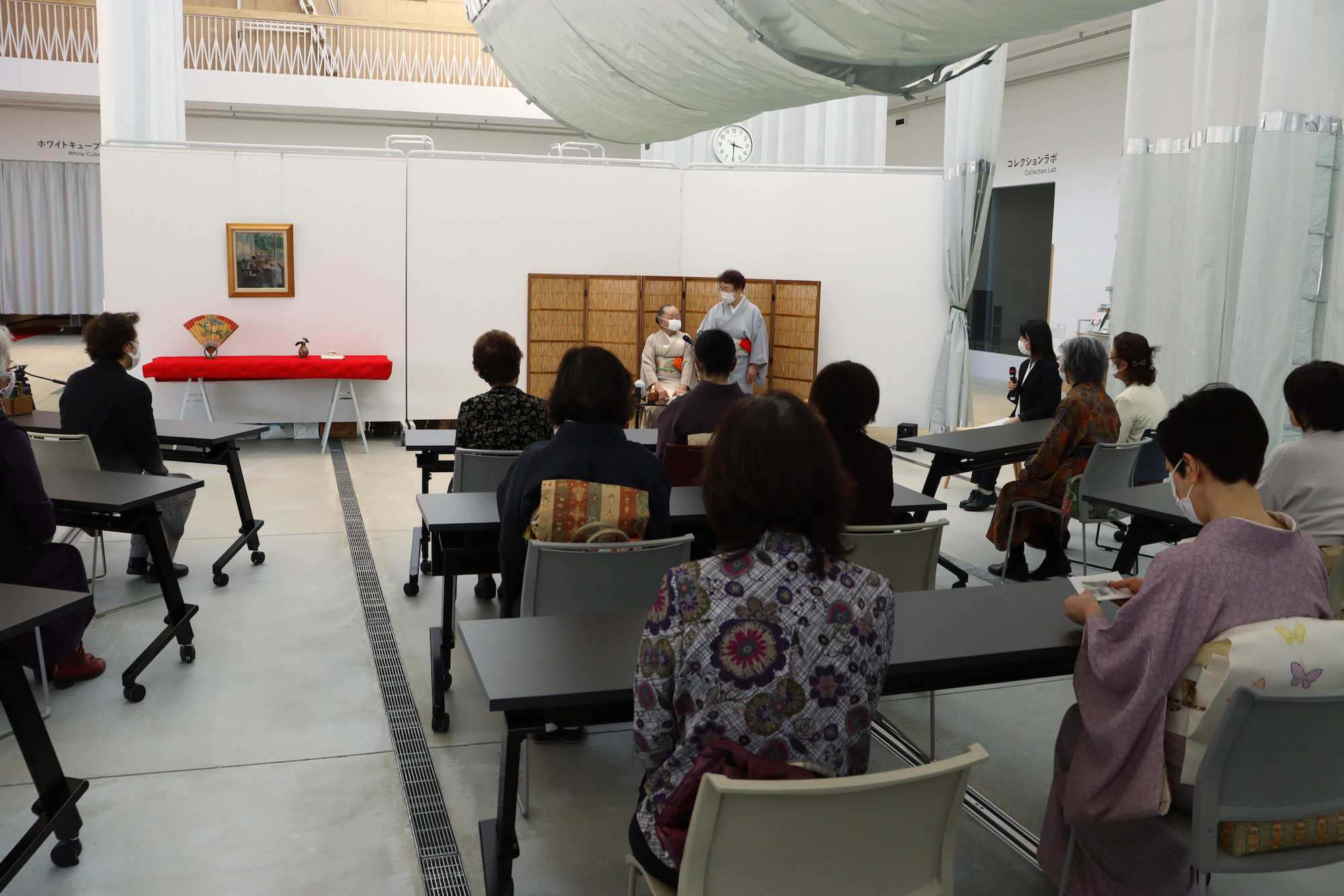
White Cube, the main exhibition space among the private rooms, is surrounded by five-metre-high white walls, providing a versatile setting for displaying a wide range of artworks. Initially used for a spatial contemporary art display during the Opening Exhibition Gift, Gift, the space underwent a transformation for the Sustaining the MONOGATARI – Talk, Connect Grow Collection, where the museum’s collection of oil paintings, watercolours, calligraphy, and more, with a focus on wall-mounted displays. With the use of temporary walls to alter the room’s layout, visitors can expect the atmosphere to change significantly with each new exhibition.
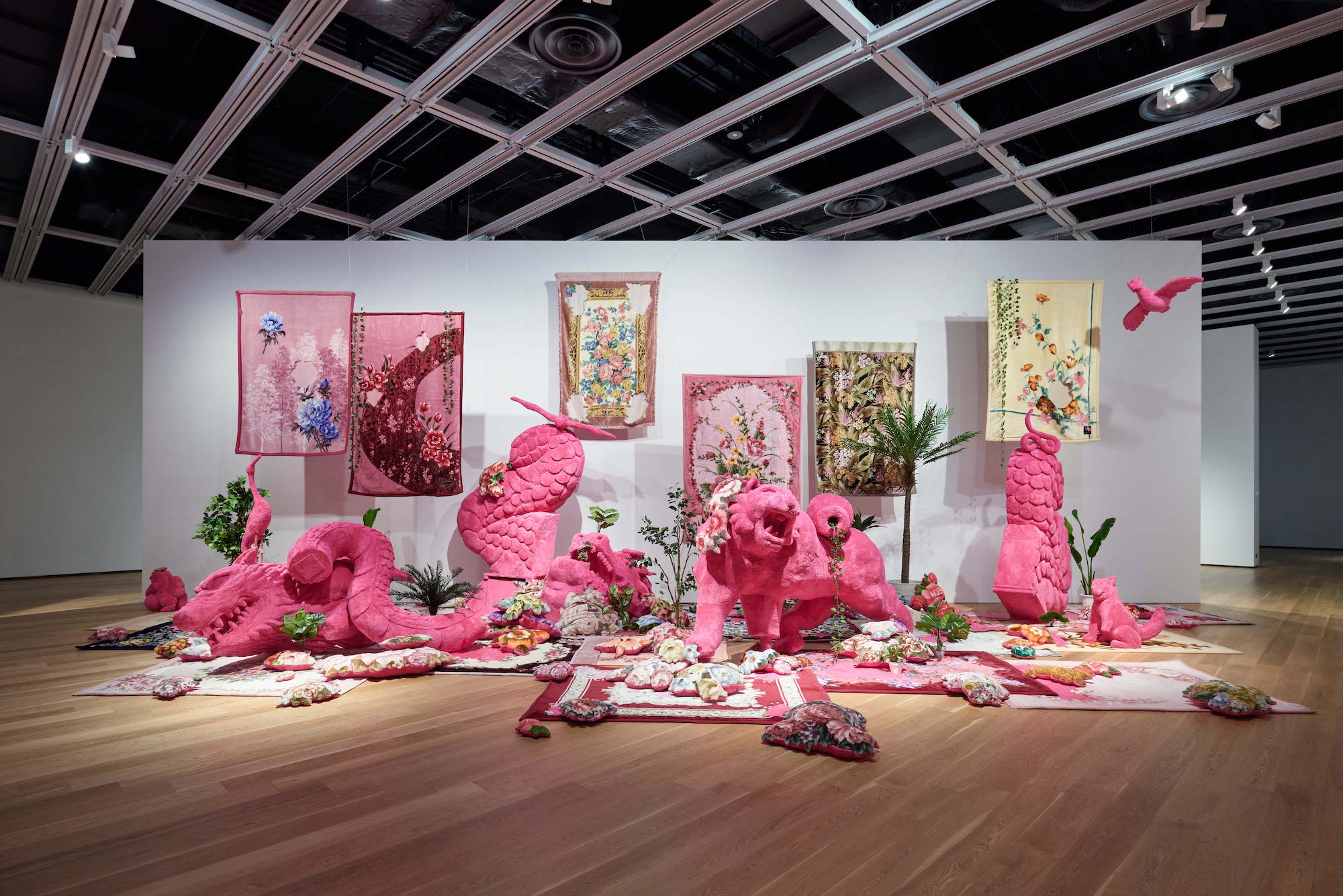
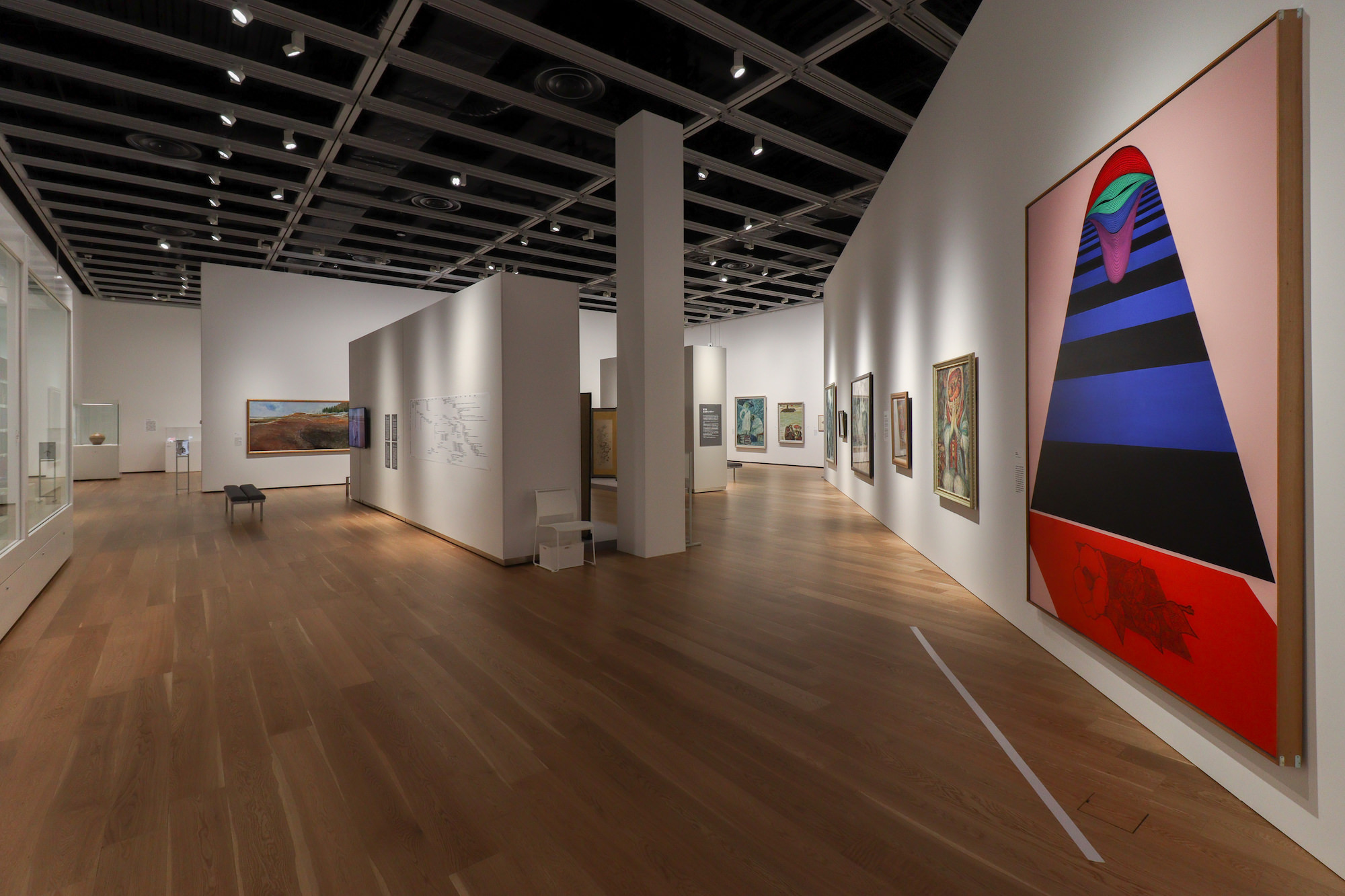
The Collection Lab is an exhibition space of about 100 metres squared, enclosed by grey walls. Smaller in scale compared to the White Cube, this room, true to its name, is designed to feature experimental displays of collection pieces, incorporating a more dynamic and exploratory approach.
Next to the Collection Lab is the Black Cube, a space that can be darkened to showcase video works. During the Sustaining the MONOGATARI – Talk, Connect Grow Collection exhibition, it featured screenings of interviews with contributors to the collection, as well as displays of works created through school collaboration projects.
The Gallery serves primarily a space for residents to host exhibitions. It is equipped with windows that overlook the Museum’s Mae-niwa Plaza, and a 3.5-metre-high rotating wall. The operable interior windows allow for adjustable views and natural light, providing greater flexibility in how artworks are presented. As the community and its people continue to evolve, the exhibitions in the gallery are likely to transform as well.
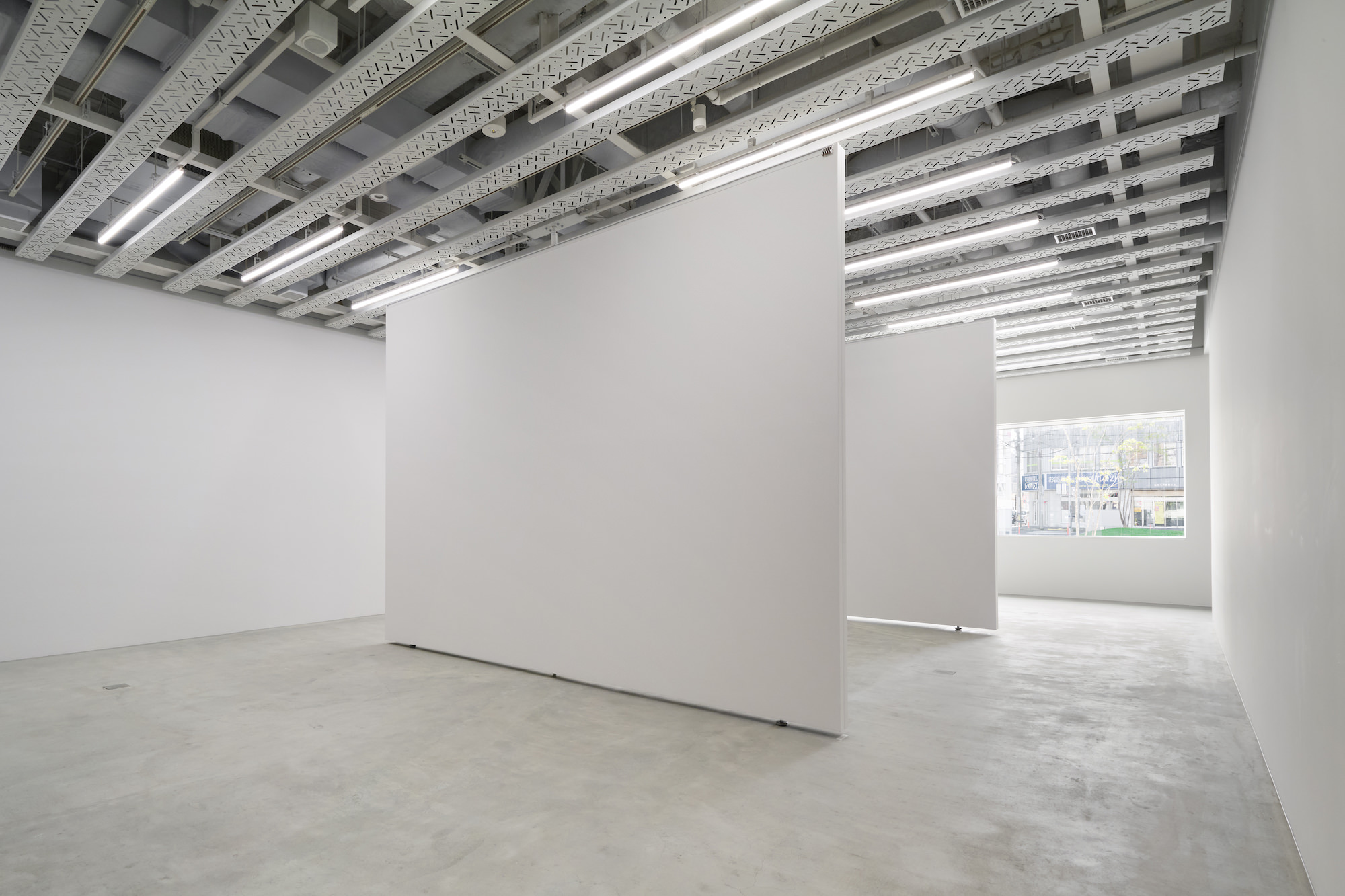
In addition to the spaces mentioned earlier, the private rooms include the Studio, which features soundproofed, sound absorbing walls and a high ceiling; the Workshop Room, designed to foster creative opportunities; and the Meeting Room, which can also serve as a backstage or waiting area. Together, these rooms offer a wide range of uses, from citizen-led exhibitions to curated shows. Arranged around the Giant Room, these private spaces help create an environment that encourages interaction and collaboration.
The Hachinohe Art Museum was designed not just for showcasing artworks but to be a space actively used by people. For curators, it’s a space for challenge and discovery. In addition to the traditional museum model, which separates exhibitions from viewers, this museum encourages the creation of ‘events’ through human interaction – the question is how this interaction will contribute to the growth of the community. I hope you’ll keep an eye out for our upcoming activities.
HIRAI Mari
Curator, Hachinohe Art Museum. Born in Aomori Prefecture. Has experience working at the EDO-TOKYO MUSEUM, the National Living Treasure Museum, and the FUJISAWA UKIYO-E MUSEUM, she has held her current role since 2021. Hirai has curated a range of exhibitions, including The 3D Ukiyo-e: The World of Kabuki Kumiage Dourou (Paper Diorama of Kabuki) from the Collection of the SHOCHIKU OTANI LIBRARY (FUJISAWA UKIYO-E MUSEUM, 2018), The Complete Works of Hiroshige’s “Toukaido in Vertical Picture” Series (FUJISAWA UKIYO-E MUSEUM, 2018-2019), The Hiroshiges’ Landscapes: Hiroshige I, II and III: From Edo to Meiji Periode (FUJISAWA UKIYO-E MUSEUM, 2019), The Ukiyo-e Sugoroku board game and Seven Deities of Good Luck (FUJISAWA UKIYO-E MUSEUM, 2019-2020), Are they the most powerful?: the Tales of Warriors from Sagami Province and Ukiyo-e pictures (FUJISAWA UKIYO-E MUSEUM. 2020), and Sustaining the MONOGATARI – Talk, Connect, Grow Hachinohe Art Museum Collection.